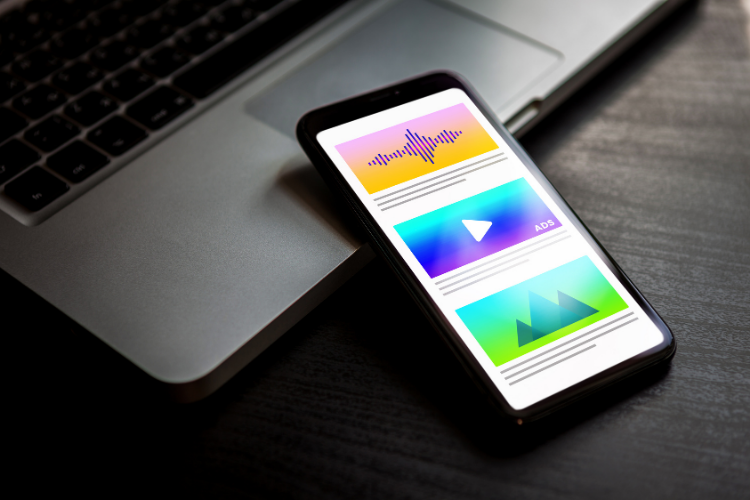4 Effective Paid Advertising Techniques for eCommerce & Retail Business Owners
May 27, 2021 - 14 minutes readPowerful paid advertising tactics, methods, and strategies you need to know.
 ©NicoElNino via Canva.com
©NicoElNino via Canva.com
If you get it right, paid advertising offers a healthy return on investment (ROI). Many small business owners avoid investing in this form of advertising because of the term “paid.”
But you don’t need to have an Amazon-like wallet to win with paid advertising. With the right approach, you can make a real impact with a modest budget.
If you’re an eCommerce or retail business owner looking to grow your business in an increasingly competitive online market, you’ve come to the right place.
Here, we’ll explore four proven and practical paid advertising methods for eCommerce and retail success.
Why you should invest in paid advertising
First of all, website traffic earned through paid advertising campaigns, including pay-per-click (PPC), earns an average of 50% more conversions than organic marketing strategies.
In addition to an excellent ROI and high conversion rate, adding paid advertising to your retail or eCommerce business’s marketing campaign will expand your commercial reach, growing your audience in the process.
Here are some other key reasons you should invest in paid advertising:
- You can earn positive paid advertising results with a small budget.
- You can accurately target your audience and personalize your ads to earn more sales.
- You can engage mobile users with your ads while gaining performance data that will help you boost your marketing efforts.
4 essential paid advertising techniques you need to know
It’s clear that paid advertising offers plenty of business-boosting value. But how do you do it the right way? Here are four proven paid advertising techniques for eCommerce and retail businesses.
Sign Up for Google Merchant Center
While most online businesses use Google ads to appear in relevant paid searches, boost brand awareness, and earn more sales, many overlook the value of Google Merchant Center.
Google Merchant Center is a one-stop-shop for Google advertising and allows you to work with essential company, consumer, and product data from one dashboard. Armed with a Google Merchant Center account, you can appear in regular paid search engine rankings, Shopping Ads, and visual search listings.
To sign up for a Google Merchant Center account and level up your paid advertising campaigns, you will need to provide information about your business, following the prompts during the registration process.
While the signup journey is straightforward, if Google believes any information provided is inaccurate or misrepresentative of your business, you will have to fix it before gaining access to the platform.
Here are the most common issues flagged during Google Merchant Center registration:
- Your store’s checkout journey being considered insecure, unsafe, or confusing.
- Missing business contact details or privacy policy information.
- Misleading product information, including inaccurate inventories, outdated product pricing, and poor product descriptions.
Make sure you consider all of these areas before making your application, and you will gain access to the platform with minimal issues. Once you’ve signed up to Google Merchant Center, you will have a wealth of accessible paid marketing tools at your disposal.
To ensure your website is easy to navigate and your content is engaging and accurate, which will increase your chances of enjoying Google Merchant Center success, take a look at 15 actionable ways to optimize your store’s pages for more sales.
Use a balanced mix of paid keywords
Using a balanced mix of keywords is essential when you’re creating paid advertising content, especially PPC ads.
Read: If you’re not 100% familiar with PPC, check out our introductory guide on paid advertising strategies to grow your business.
By taking a logistical approach to your paid advertising keyword research strategy, you will get the best results for your budget while improving your brand reputation with messaging that packs a punch.
By creating 2-3 buyer personas based on your model target customers, you will be able to establish your paid advertising goals based on your audiences’ wants, needs, and pain points. From there, you can use your platform of choice (Google Ads, Google Merchant Center, Microsoft Advertising, etc.) to search for and buy the best keywords for your campaigns.
To earn a healthy ROI for your paid ad efforts across channels, you should focus on creating clusters (or small lists) of keywords (both relating to your target sector or industry and more specific, niche terms) based on:
The awareness stage
At the awareness stage of the customer or buyer’s journey, your goal is to build trust and get your name in front of the right people. To do this, you should focus on broad-match keywords (industry-wide, less niche terms) that offer value without coming off as too pushy or salesy.
You could create an ad that links to one of your “how-to” blog posts using broader keywords that promise information or practical guidance. If you sell sustainable lounge furniture, for instance, you might bid for search terms based on “how to choose the right sustainable furniture” or “how to upcycle a chair.”
Doing so will position you as a trustworthy source of information while giving your readers the chance to interact with your brand.
The consideration stage
If you’re targeting consumers that have already interacted with your brand or are strongly considering making a purchase, you should explore keyword opportunities that provide direct solutions to your target customers’ problems or highlight specific products.
Going back to our sustainable furniture example for a moment, your consideration stage ads would target keywords similar to “sustainable desk chairs,” “desk chairs from recycled materials,” or “eco-friendly office furniture.”
These types of ads could offer links to specific product pages, dedicated category pages that provide information about a specific product range, or landing pages featuring relevant deals or offers.
By using your buyer personas as a working guide and carefully curating smaller lists of key terms based on these two major stages of the sales journey, you will ensure you use your ad budget wisely while maximizing the success of your ads.
Bonus tip: To create effective landing page content for your paid ad and drive conversions, read our essential UX and microcopy writing tips to boost conversions and drive sales.
Get dynamic with social media story ads
Around 500 million social media users actively engage with Instagram Stories every day.
In addition to using static paid social media ads, getting dynamic and creating narratives around your campaigns will increase conversions while helping you stand out from the crowd.
As humans, we resonate with stories. Create a strong visual narrative, and you will win big with your social media ads. Here is a video tutorial to help you get started with Instagram Story ads:
Now that you’re up to speed with Instagram Story ads, here are some practical tips that will maximize your success:
- Choose a creative concept and select assets (video footage and images) that fit into a clearcut beginning, middle, and end.
- Develop each story-based ad campaign with a specific theme or product focus, but prioritize the story over the sales push. Without an exciting or intriguing story, your audience will not stick around.
- Write short, snappy, and conversational captions to complement your visuals. Make sure all captions weave together naturally while encouraging the viewer to engage with the next part of the story.
- Always use the recommended dimensions for your story ads to make them engaging and professional. Instagram’s specs are: a resolution of 1080 X 1920 pixels, an aspect ratio of 9:16, and a maximum of 4GB for videos.
- Base your audience targeting on your ad’s main goal as well as the demographic details from your paid ad buyer personas. You should also target “all devices” unless you have a specific reason for creating an ad for mobile-only or desktop-only audiences.
- Always finish with a strong call to action (CTA) that guides the viewer to a product page, landing page, video, or blog post. You should also showcase your branding or brand strapline towards the end of your ad.
 ©BestForBest via Canva.com
©BestForBest via Canva.com
Go native
Native advertising is one of the newest branches of paid marketing—and it should be a part of your ecommerce or retail business’s marketing strategy.
Native ads follow the natural flow of a user’s individual browsing experience, offering brands the chance to place themselves in front of a consumer when they are most engaged. Native-style ads are placed naturally in publications as informational sponsored content or relevant in-feed ads.
The reason native ads are so effective is that they are unintrusive and complement the content the target customer is engaged with at the time. In fact, 71% of shoppers say they personally identify with a brand after connecting with its native ads versus only 50% with display ads.
To reap the full rewards of native advertising, it’s important to create highly targeted content that is compelling and engaging in equal measures. Like PPC and social media paid ads, you should always aim to create different native campaigns based on different buyer personas.
Land Rover’s native “Dragon Challenge” campaign video, for example, has all the ingredients necessary for a successful marketing campaign: a compelling story, inspiring visuals, and lots of suspense.
Featuring history’s first-ever attempt to scale the 999 stairs to China’s Heaven’s Gate by car, this incredible feat of video marketing achieved a huge level of engagement for the brand.
Promoted through a mix of native advertising formats, the YouTube video alone has earned more than 20 million views to date.
Read: Our definitive guide to TikTok marketing for inspiration on how to create compelling social media-based native advertising content.
“Nobody counts the number of ads you run; they just remember the impression you make.”—Bill Bernbach
These four essential paid advertising techniques will help your business connect with more customers, build trust, and stand out in your niche. Be consistent, make sure your ad content offers genuine value, and try a balanced mix of techniques to will accelerate the growth of your business.
If you’re looking to improve your online store while creating product or landing pages to help your paid ads convert, our eCommerce store builder is powerful, accessible, and integrates with a number of online tools or platforms.
Contact us to find out more and read our small business owner’s guide to social listening to get one step ahead of the competition.